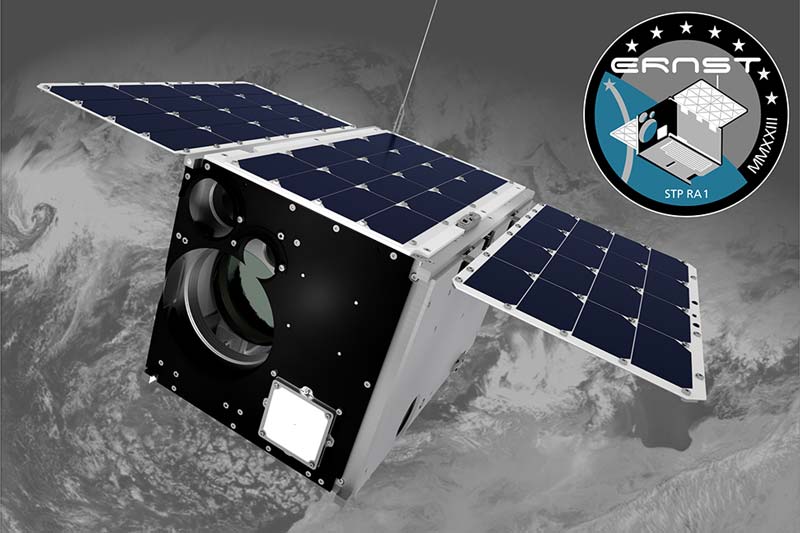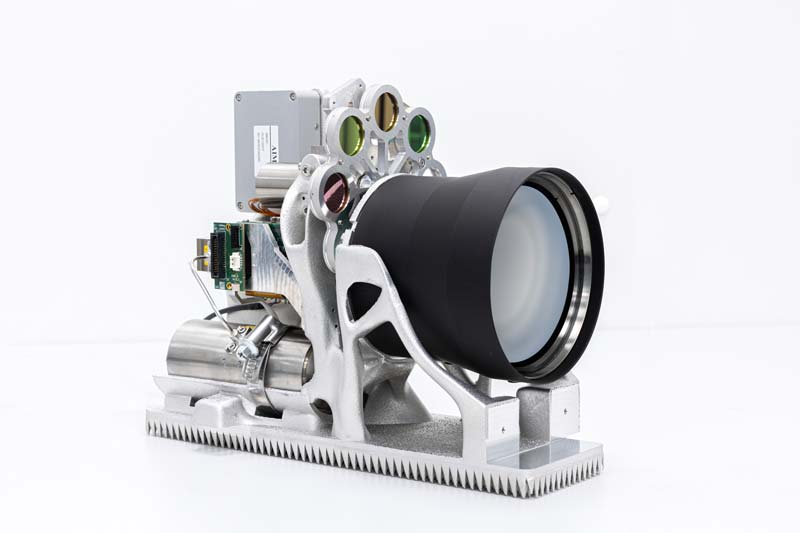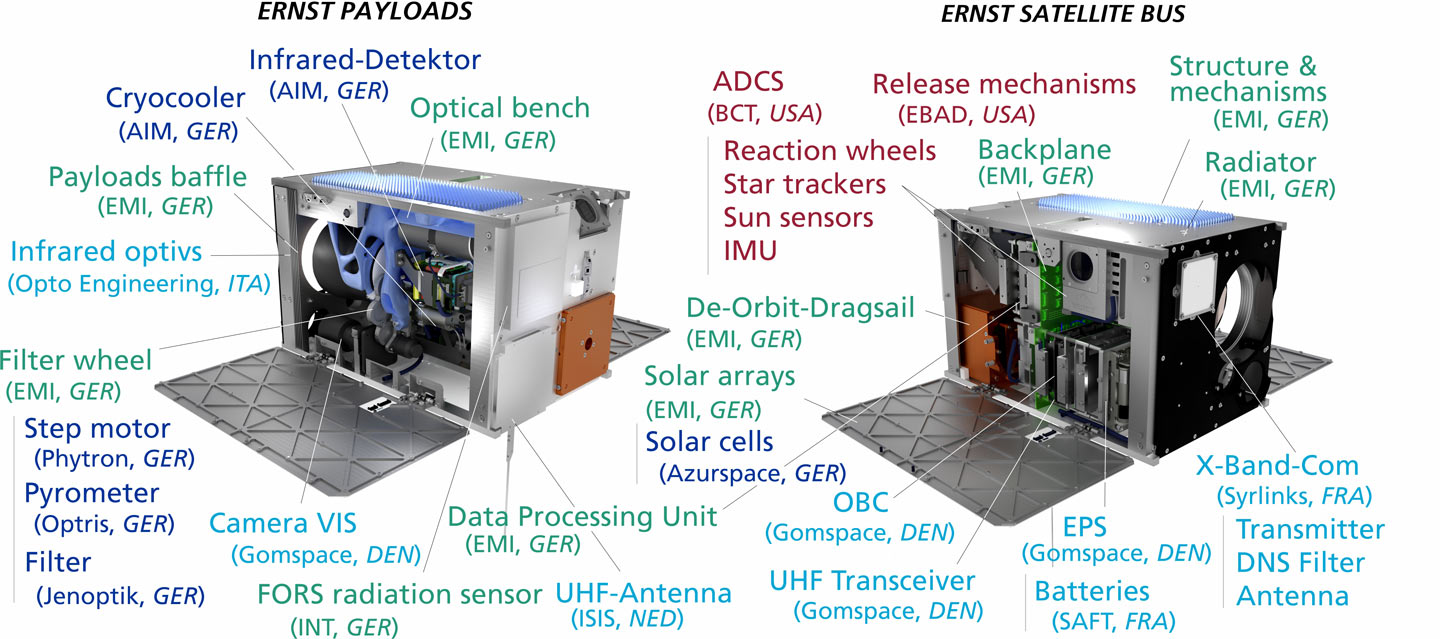Demonstration of a small, standardized, low-cost satellite in an ambitious mission

With its research project to build a small satellite platform and prepare a mission to investigate potential applications for threat detection, Fraunhofer EMI is making its first substantial contribution to the new capability dimension of space. With the completion of the ERNST flight model, the first small satellite mission for the German Armed Forces is imminent. ERNST is a 12U CubeSat equipped with a cryogenically cooled infrared imager for demonstrating the potential of small satellite technology for military purposes while providing knowledge on early detection of ballistic or hypersonic missiles from low Earth orbit.
The ERNST satellite mission represents a first step in several respects. ERNST is not only the first CubeSat to be demonstrated specifically for the purposes of the German Armed Forces. The small satellite is also the first spacecraft developed by Fraunhofer, which so far has contributed to innovations at component and subsystem level only. ERNST also sets technical standards. Foremost is the demonstration of a complex cryogenically cooled infrared payload in a 12U CubeSat. The “U” for “unit” defines the size metric of the CubeSats, with one unit corresponding to a cube with an edge length of ten centimeters. This gives ERNST external dimensions of 24 by 24 by 36 cubic centimeters with less than 20 kilograms total mass.
Primary payload of ERNST is an infrared imager, which is used to demonstrate concepts for missile detection developed at Fraunhofer IOSB. Effective detection and tracking of approaching threats demand fast and reliable image exploitation to ensure sufficient time for automatic initiation of countermeasures. The combination of different spectral ranges allows fast and reliable detection of the infrared signature of a missile or hypersonic vehicles during their different operational phases like boost and gliding phases. One of the advantages of early warning from low Earth orbit compared to geostationary wide-field view sensors is the higher spatial resolution leading to a higher signal-to-clutter ratio. A step-stare approach is used for increasing the observation times of ERNST in case of target detection or for realizing higher integration times for weak signals in defined regions of interest along the 96-kilometer swath of ERNST. The ERNST mission will not only collect reference data of the Earth’s background in the relevant wavelength ranges, but also characterize the signatures of a missile launch and demonstrate their tracking.


